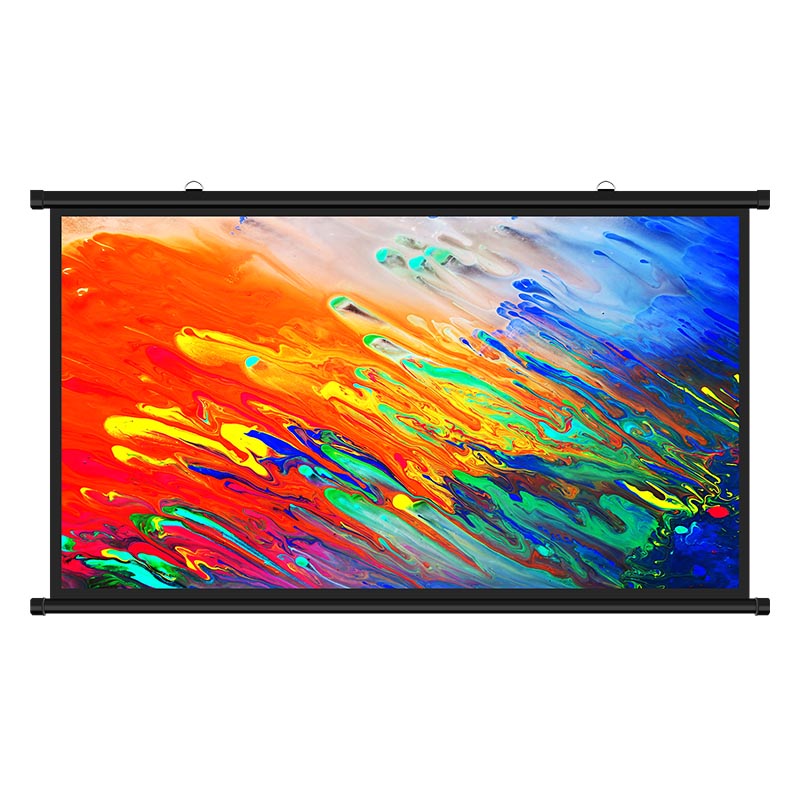Manual Wall Screens: A Simple, Effective Solution for Any Projection Need
2025-06-05
In the world of visual presentation, manual wall screens continue to be a reliable and cost-effective solution for classrooms, offices, conference rooms, and even home theaters. While motorized screens and smart displays gain attention, the manual wall screen holds its ground with simplicity, durability, and excellent value for money.

In this blog, we’ll explore what manual wall screens are, their benefits, and how to choose the right one for your needs.
What is a Manual Wall Screen?
A manual wall screen is a pull-down projection screen mounted on a wall or ceiling. It operates similarly to window blinds—just pull the screen down to the desired height and lock it in place. When you're done, it retracts into its metal casing with a smooth spring mechanism.
These screens are compatible with a wide range of projectors, including LCD, DLP, and LED models.
Advantages of Manual Wall Screens
1. Affordability
Manual screens are significantly less expensive than electric or motorized options, making them ideal for budget-conscious buyers.
2. Ease of Use
Simple pull-down operation means no need for remotes, power outlets, or complex installations.
3. Space-Saving Design
When not in use, the screen retracts into a compact casing that blends with the wall or ceiling.
4. Reliable Performance
Fewer electronic parts mean fewer chances of technical failure—manual screens can last for years with minimal maintenance.
5. Versatile Applications
Great for classrooms, training rooms, meeting halls, home cinemas, and churches.
Key Features to Look For
When shopping for a manual wall screen, consider the following features:
Screen Size & Aspect Ratio: Common sizes range from 60 to 150 inches. Choose the aspect ratio (4:3, 16:9, or 16:10) that matches your projector.
Screen Material: Matte white is most popular for clear and bright images. Some screens offer ambient light rejection or gain-enhanced materials.
Black Borders: Enhance image contrast and focus viewer attention.
Slow Retraction Mechanism: Prevents damage and ensures smooth retraction.
Mounting Options: Wall and ceiling mount compatibility for flexibility in installation.
Installation Tips
Use a level to ensure proper alignment.
Make sure the wall or ceiling can support the screen's weight.
Install at a height where viewers get a clear, direct line of sight.
Leave space beneath the screen for furniture or AV equipment.
When to Choose a Manual Wall Screen
Choose a manual screen if:
You don’t need automation.
You have a fixed projection area.
You want a reliable and affordable solution.
You’re outfitting multiple rooms on a limited budget.
Final Thoughts
Manual wall screens combine practicality with professional presentation. Whether you're teaching a class, pitching a proposal, or enjoying a movie night, these screens deliver dependable performance without complexity. If you’re looking for a long-lasting, no-fuss solution for your projection needs, a manual wall screen might be the perfect choice.


